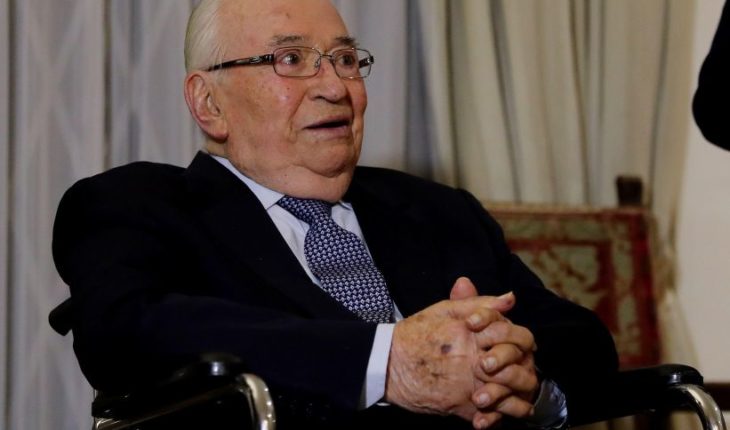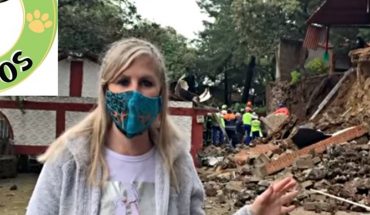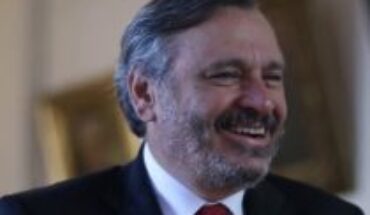the former Colombian President Belisario Betancur, whose courageous efforts for reaching a peace agreement with leftist rebels in the 1980’s was derailed by a strawberry tool wave of violence in the security forces, died Friday in a Bogota clinic. He was 95 years old. The death of the politician was confirmed by the President Iván Duque, who said on his Twitter account that the legacy of Betancur in politics, history and culture is an “example for all future generations”. On Thursday afternoon, the Colombian Vice President Marta Lucía Ramírez spread wrong through the same social network information and wrote that Betancur had died, which was later denied by herself and other means but still caused great confusion . Fundación Santa Fe de Bogotá private clinic said in a statement that Betancur, who ruled Colombia between 1982-1986, died on Friday afternoon without offering further details. Uribe, who in recent months suffered a kidney condition, was hospitalized, according to press reports. Several politicians and other figures of Colombian life expressed condolences through social networks and dedicated words of praise and recognition, who was the architect of the peace process with rebel groups.” All honor and glory to President Belisario Betancur. Great patriot, great friend and great example of integrity, honesty, and humility,”said on his Twitter account the Uribe Juan Manuel Santos to lament the death of the politician. In addition, the former presidential candidate and former Mayor Gustavo Petro said in its account of the social network that “now if died Belisario”. Petro recalled that when he was a member of the M19 guerrilla was present at the inauguration of Betancur and ended when its mandate “he was imprisoned and tortured me, peace had not been but a drawing on the wall”. Betancur was the first Colombian of humble origin to reach the Presidency of Colombia in 1982, a position held only until then by members of the Colombian elites. The politician, who was the son of peasants who lived in extreme poverty in the Western State of Antioquia, ascended to the top of the power nearly four decades after starting his political career in 1945, as a member of the conservative party. With the help of scholarships graduated lawyer and Economist, he also served as a writer, journalist and poet. The former President he had to govern in a period of time considered among the darkest and most violent in the history of Colombia.Su arrival at the Presidency provoked a wave of enthusiasm after promising that during his four-year term he would seek peace with guerrilla in order to deliver to Colombians to an armed conflict that until now has left more 250,000 deaths and millions of displaced persons for more than 50 years. His attempt to make peace with the guerrillas was not delayed. Just took possession on August 7, 1982 carried forward this initiative, challenging even the members of his own party. The peace process was vigorous and not quickly bear fruit. At least for a moment, it seemed that peace would finally come to Colombia when it reached an agreement with the revolutionary armed forces of Colombia (FARC), the largest and oldest guerrilla of the country in 1983. The peace agreement, however, was quickly truncated once members of the Patriotic Union – an incipient party led by FARC – would be victims of acts of extermination in which about 4,000 of its members died. The deaths of left activists, including mayors and congressmen, during this wave of terror were attributed to military and paramilitary right-wing. The 19 April Movement (m-19), a Cuban-inspired leftist guerrilla and founded by University students, accused Betancur’s “betrayal” by the failure of the peace agreement and on November 6, 1985 stormed the Palace of Justice to demand that is It held a revolutionary trial against the President in which judges of the High Court would act as judges. Betancur is left in the hands of the military to regain control of the Palace in a fierce battle with about 50 guerrillas. The Palace was set on fire and was left in ruins, with more than 100 people dead, including rebels, and 11 of the 24 judges of the Supreme Court. Other 11 people, many of them workers in the cafeteria, disappeared. Years later the authorities would find out that some of the rebels and suspected civilian supporters were taken alive from the building and subsequently killed because they witnessed heavy-handed by the military tactics when they retook the building. Betancur actions during the siege were questioned, including his refusal to receive a phone call from the President of the Court asking for negotiations, as well as by a Government order that forced the television networks to interrupt coverage of the confrontation and broadcast a football match. The tragedy followed by checking the mandate of Betancur.Apenas a week after the tragic events in the Palace of Justice, November 13, 1985, the Nevado del Ruiz volcano erupted and triggered an avalanche of rocks and mud on the city of Armero where they were killed buried some 25,000 people. Crushed by the resounding failure of its initiative of peace and suffering generated by the eruption of the Nevado del Ruiz, the greatest natural disaster in the history of Colombia, he faced some thought that what happened could be relaxed with a timely evacuation of the city Betancur ended his Government on August 7, 1986 and his legacy was tarnished forever. For years, he said that he had lost control of the siege of the Palace. The former President was acquitted of irregularities by a Congressional Research at that time. The exgobernante remained outside of politics, something unusual among the Colombian Uribe, but broke their silence by 2015, showing remorse for his action when the then President Juan Manuel Santos was negotiating another agreement with the FARC’s peace.” If errors made, ask for forgiveness”, said. After the end of his Government, Betancur was devoted to the cultural work, which earned him numerous awards, Honorary is including doctorates in Humanities of the American universities of Colorado and exmandatario Georgetown.El He donated his library of 22,000 copies to the Universidad Pontificia Bolivariana in Medellín where he graduated lawyer and Economist. His first spouse, Rosa Helena Alvarez, with whom he married in 1945, died in 1998. In 2000 he contracted nuptials with Dalita Navarro, a sculptor born in the Venezuelan city of Maracaibo and ex-wife of Teodoro Petkoff, a former Communist and Venezuelan guerrilla of the 1960s that renounced arms and from the pages of the newspapers fought the ideas of radical left who refused at the end of 1960. From the marriage with Alvarez had three children: Beatriz, Diego and Clara María.
translated from Spanish: The former Colombian President Belisario Betancur died
December 7, 2018 |





